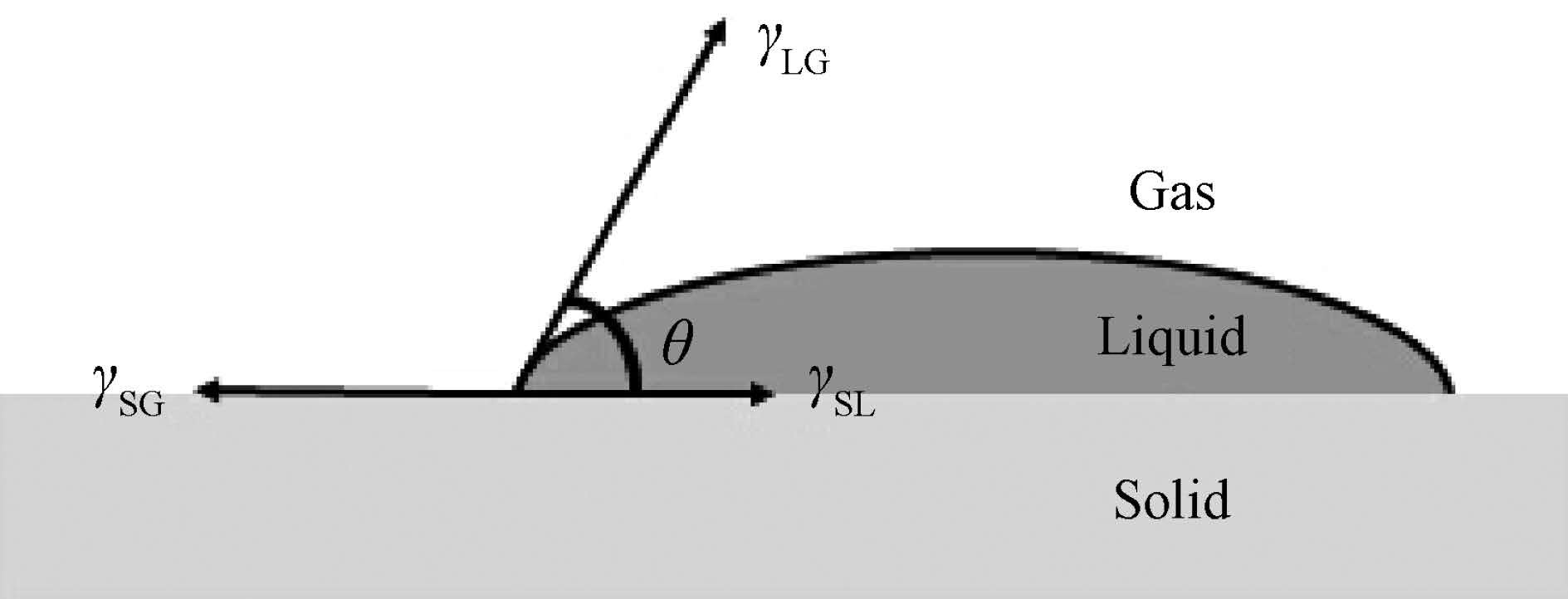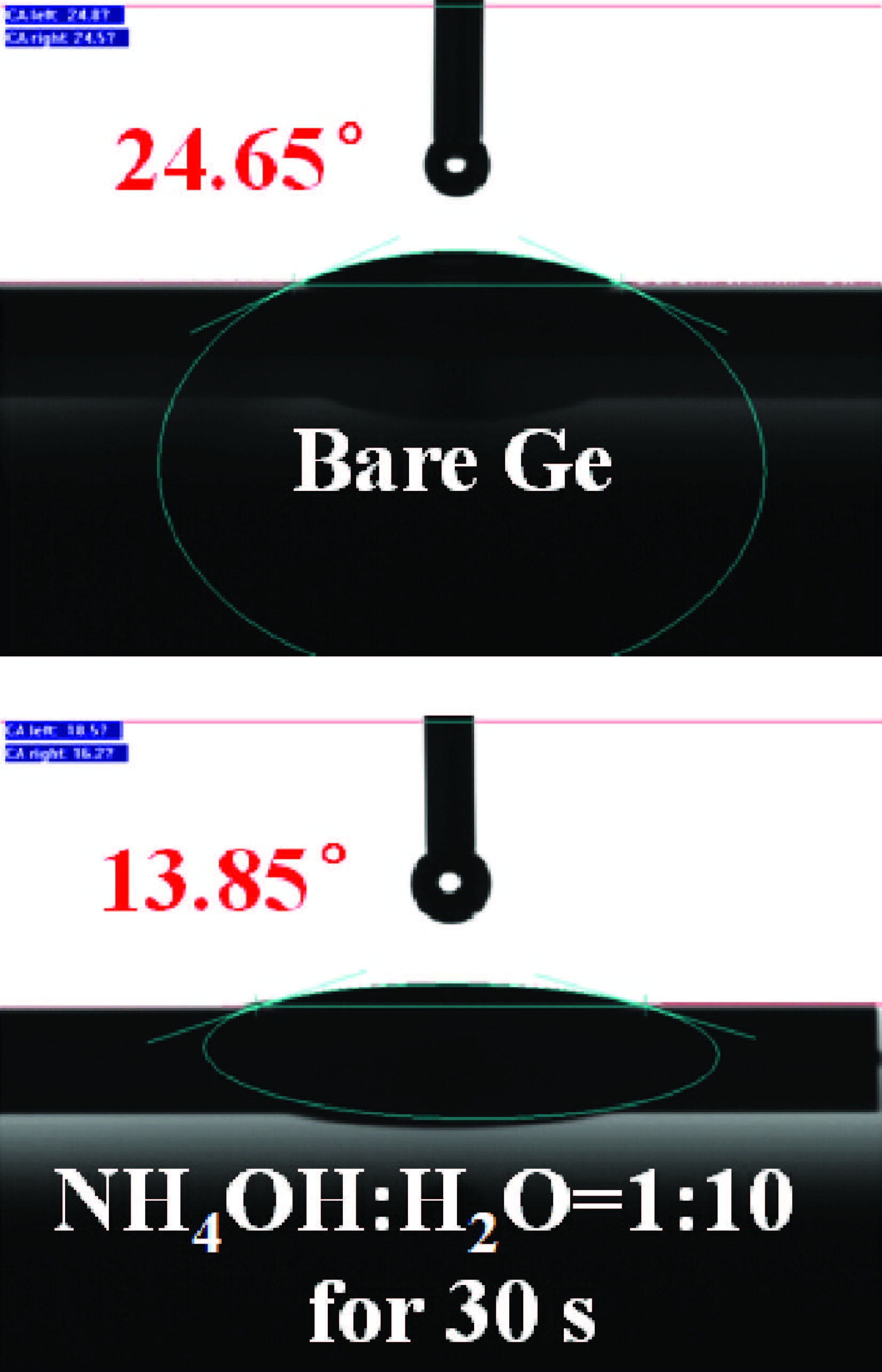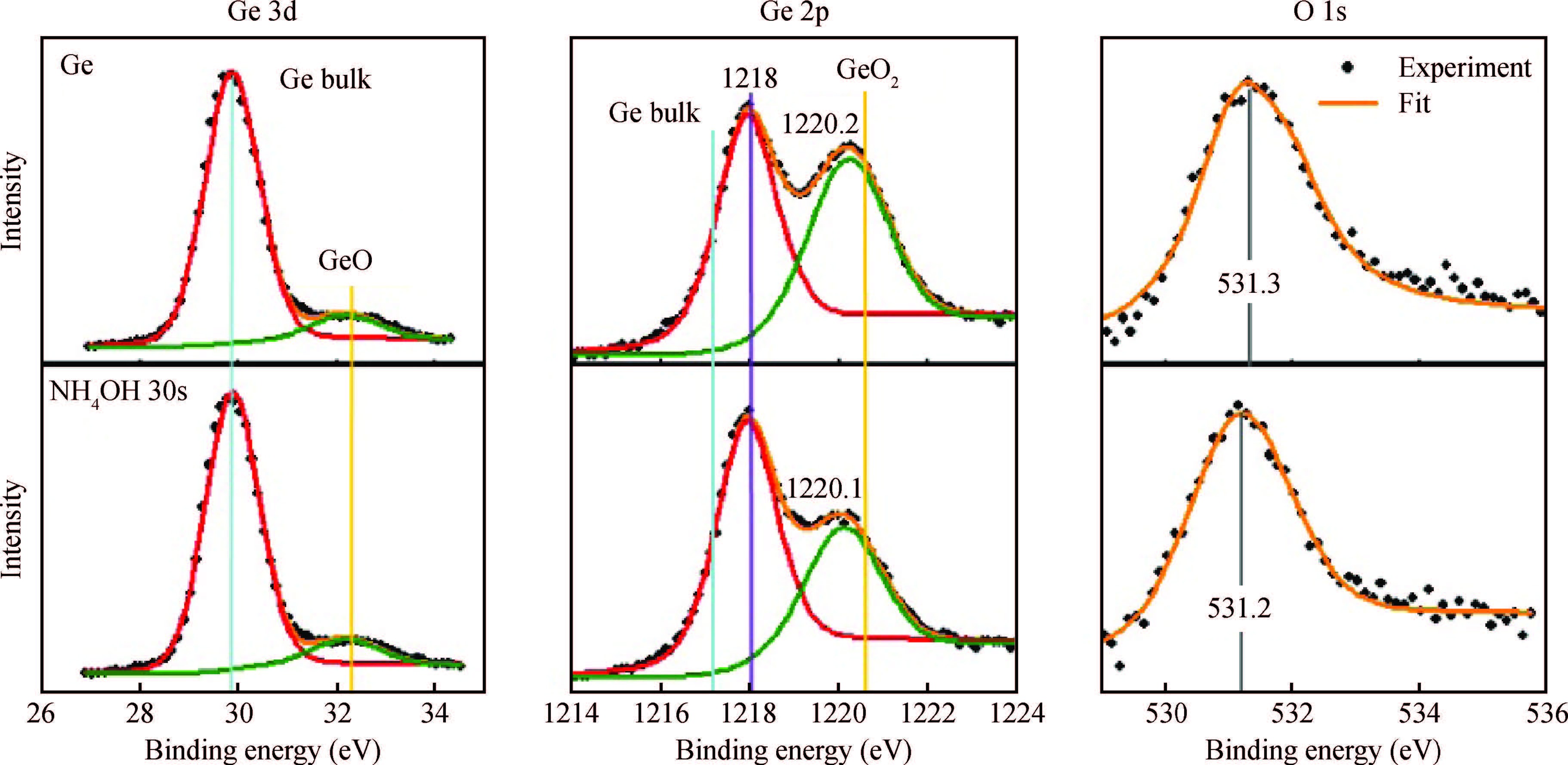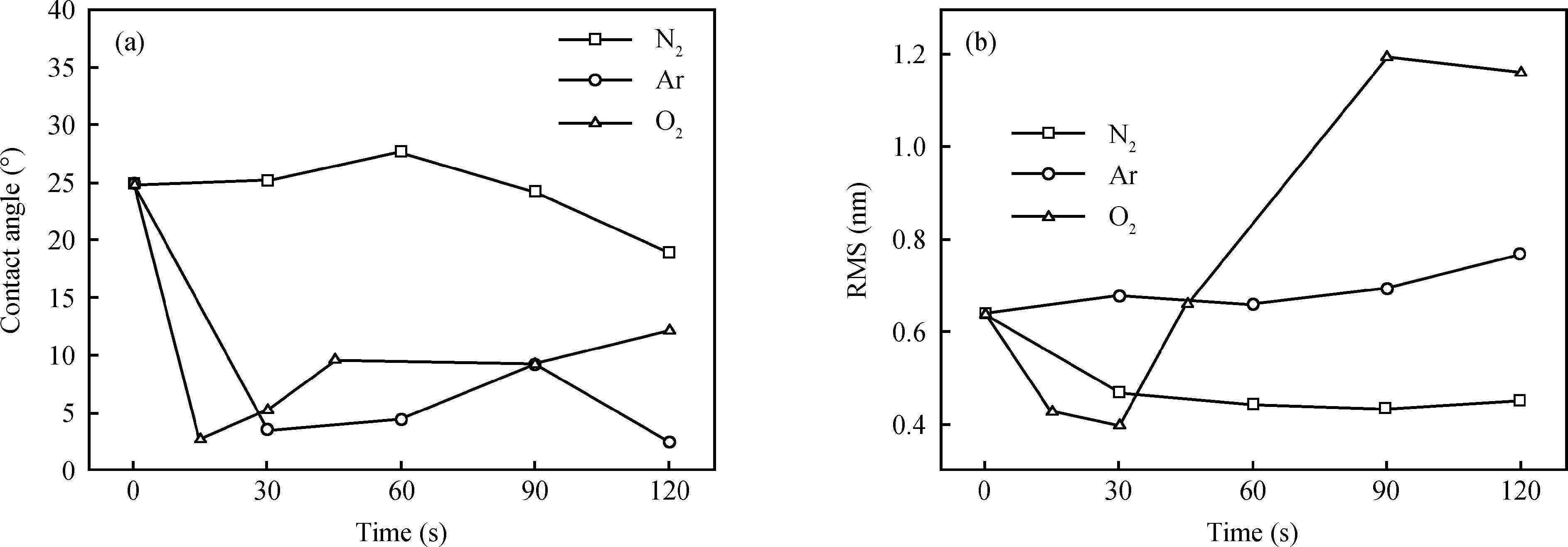| Citation: |
Shumei Lai, Danfeng Mao, Zhiwei Huang, Yihong Xu, Songyan Chen, Cheng Li, Wei Huang, Dingliang Tang. A thin transition film formed by plasma exposure contributes to the germanium surface hydrophilicity[J]. Journal of Semiconductors, 2016, 37(9): 093004. doi: 10.1088/1674-4926/37/9/093004
****
S M Lai, D F Mao, Z W Huang, Y H Xu, S Y Chen, C Li, W Huang, D L Tang. A thin transition film formed by plasma exposure contributes to the germaniumsurface hydrophilicity[J]. J. Semicond., 2016, 37(9): 093004. doi: 10.1088/1674-4926/37/9/093004.
|
A thin transition film formed by plasma exposure contributes to the germanium surface hydrophilicity
DOI: 10.1088/1674-4926/37/9/093004
More Information
-
Abstract
Plasma treatment and 10% NH4OH solution rinsing were performed on a germanium (Ge) surface. It was found that the Ge surface hydrophilicity after O2 and Ar plasma exposure was stronger than that of samples subjected to N2 plasma exposure. This is because the thin GeOx film formed on Ge by O2 or Ar plasma is more hydrophilic than GeOxNy formed by N2 plasma treatment. A flat (RMS<0.5 nm) Ge surface with high hydrophilicity (contact angle smaller than 3°) was achieved by O2 plasma treatment, showing its promising application in Ge low-temperature direct wafer bonding.-
Keywords:
- surface hydrophilicity,
- contact angle,
- plasma,
- GeOxNy,
- GeOx
-
References
[1] Moriceau H, Rieutord F, Fournel F, et al. Low temperature direct bonding:an attractive technology for heterostructures build-up. Microelectron Reliab, 2012, 52(2):331 doi: 10.1016/j.microrel.2011.08.004[2] Shen Jingman, Sun Lijie, Chen Kaijian, et al. Direct-bonded four-junction GaAs solar cells. Journal of Semiconductors, 2015, 36(6):064012 doi: 10.1088/1674-4926/36/6/064012[3] Feng X Q, Huang Y. Mechanics of smart-cut technology. Int J Solids Struct, 2004, 41(16):4299 http://cn.bing.com/academic/profile?id=2045174233&encoded=0&v=paper_preview&mkt=zh-cn[4] Lin Wang, Ruan Yujiao, Chen Songyan, et al. The impact of polishing on germanium-on-insulator substrates. Journal of Semiconductors, 2013, 34(8):083005 doi: 10.1088/1674-4926/34/8/083005[5] Akatsua T, Deguet C, Sanchez L, et al. Germanium-on-insulator (GeOI) substrates-a novel engineered substrate for future high performance devices. Mater Sci Semicond Process, 2006, 9(4):444 http://cn.bing.com/academic/profile?id=2070469517&encoded=0&v=paper_preview&mkt=zh-cn[6] Ruan Yujiao, Liu Rui, Lin Wang, et al. Impacts of thermal annealing on hydrogen-implanted germanium and germanium-oninsulator substrates. J Electrochem Soc, 2011, 158(11):H1125 doi: 10.1149/2.022111jes[7] Bhattacharya S, Datta A, Berg J M, et al. Studies on surface wettability of poly (dimethyl) siloxane (PDMS) and glass under oxygen-plasma treatment and correlation with bond strength. J Microelectromech Syst 2005, 14(3):590 doi: 10.1109/JMEMS.2005.844746[8] Bäcklund Y, Hermansson K, Smith L. Bond-strength measurements related to silicon surface hydrophilicity. J Electrochem Soc, 1992, 139(8):2299 doi: 10.1149/1.2221218[9] Suni T, Henttinen K, Suni I, et al. Effects of plasma activation on hydrophilic bonding of Si and SiO2. J Electrochem Soc, 2002, 149(6):G348 doi: 10.1149/1.1477209[10] Ma Xiaobo, Chen Chao, Liu Weili, et al. Study of the Ge wafer surface hydrophilicity after low-temperature plasma activation. J Electrochem Soc, 2009, 156(5):H307 doi: 10.1149/1.3089363[11] Oh J, Campbell J C. Thermal desorption of Ge native oxides and the loss of Ge from the surface. J Electron Mater, 2004, 33(4):364 doi: 10.1007/s11664-004-0144-4[12] Hwang H S, Park J H, Choi E S, et al. Effect of NH4OH concentration on surface qualities of a silicon wafer after final-touch polishing. J Electrochem Soc, 2011, 158(6):H641 doi: 10.1149/1.3571006[13] Marinov D. Reactive adsorption of molecules and radicals on surfaces under plasma exposure. Plasma Physics, Ecole Polytechnique X, 2012[14] Lin Meng, Li Ming, An Xia, et al. Investigation of passivation of Ge substrate by N2O plasma and N2 plasma treatment. ECS Trans, 2014, 60(1):127 doi: 10.1149/06001.0127ecst[15] Schmeisser D, Schnell R D, Bogen A, et al. Surface oxidation states of germanium. Surf Sci, 1986, 172(2):455 doi: 10.1016/0039-6028(86)90767-3[16] Tong Q Y, Gösele U M. Wafer bonding and layer splitting for microsystems. Adv Mater, 1999, 11(17):1409 doi: 10.1002/(ISSN)1521-4095 -
Proportional views






 DownLoad:
DownLoad:




















